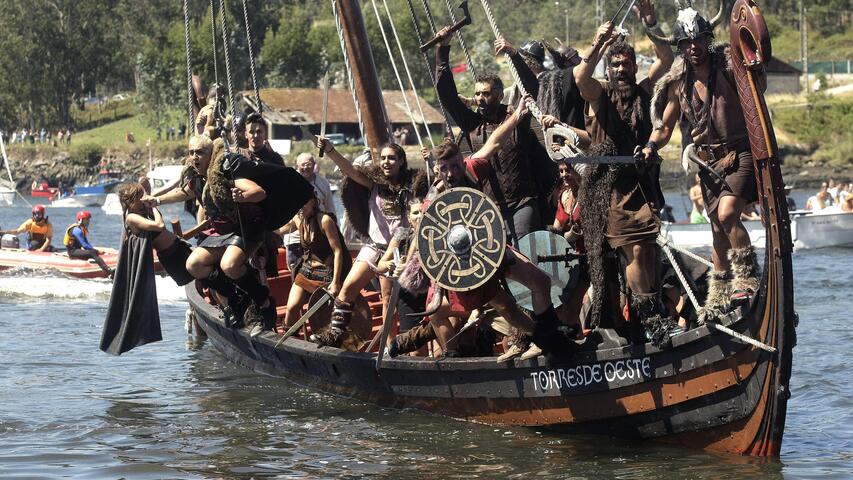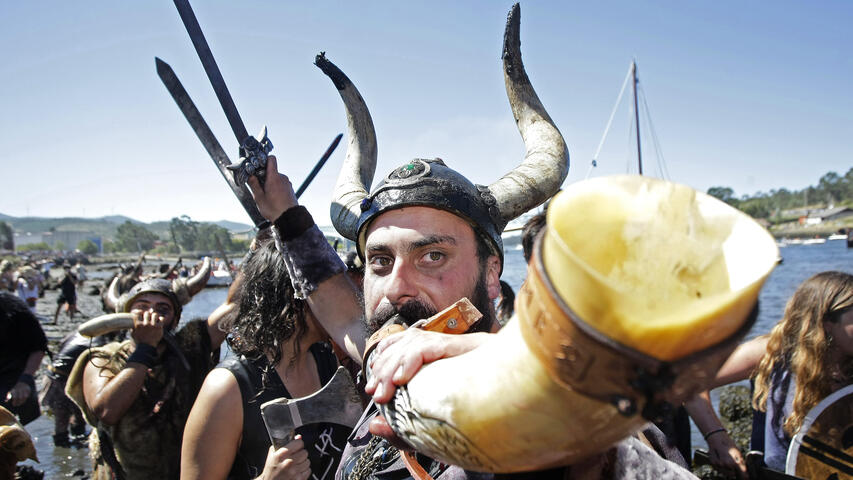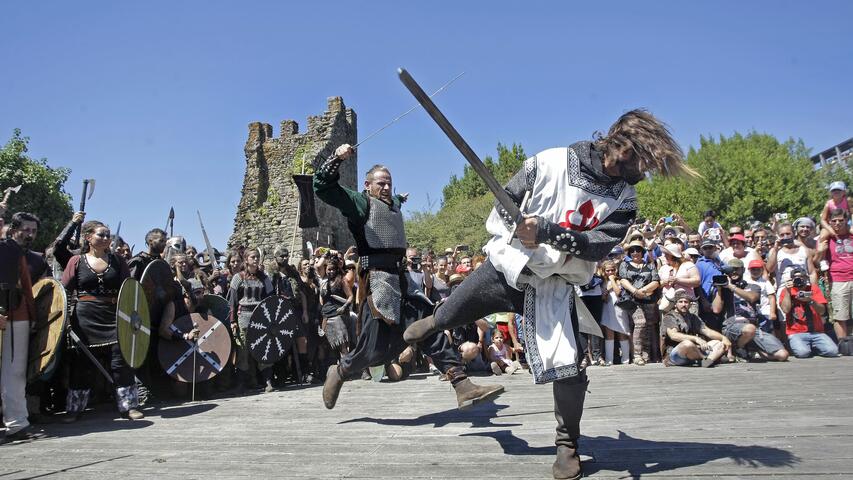Viking Romaria of Catoira
The Vikings return to Catoira... on a pilgrimage!
The Nordic pirates disembark at the foot of the Torres de Oeste in search of a party
The West Towers still majestically watch over the entrance from the Arousa estuary to the river Ulla more than a thousand years after the Viking raids, who attacked Galicia to plunder the gold of Jakobsland, as they called Santiago de Compostela. Nowadays, on the first Sunday in August, the ruins of this ancient defensive structure are the setting for a spectacular and entertaining disembarkation of the Nordic warriors. The festival, which is of International Tourist Interest, attracts more than 50,000 people every year.
The fortified complex of towers, a National Historic-Artistic Monument since 1931, formed part of the maritime defence network together with the towers of A Lanzada (Sanxenxo) and San Sadurniño (Cambados). From there, Compostela was alerted of the arrival of invaders in order to request reinforcements.
The Viking Pilgrimage was born in 1961 on the initiative of a group of friends who met in the canteen of the railway station, run by Segundo Rodríguez Sánchez, founder of the Ateneo del Ullán. The members of this entity organised a meal in honour of the archbishop of Catoir, Xelmírez. There, an anecdote took place that would give rise to a festivity that today is international and that has twinned Catoira with the countries of Viking tradition. Those friends saw a fire in the mountains of Isorna (Rianxo) and, according to the testimonies, Faustino Rey Romero, poet and priest of Catoira, exclaimed: It is the fire of the Vikings who are coming to attack us; the Vikings are coming!
Ulf, the Galician
The following year the experience was repeated and the figure of Ulf appeared for the first time, the Viking invader who arrived in the 11th century covered in branches and who has gone down in history as the Galician. The first landing of the Norse warriors took place in 1968 aboard a sand mining ship disguised as a drakkar, with a raised bow and stern, masks, sails and 24 oars, in which about 50 pirates sailed.

From 1965 onwards, the festival passed into the hands of the workers of Cedonosa, a pioneering company in the manufacture of stoneware tiles; its 200 employees took charge of organising the annual pilgrimage at their own expense. Hundreds of kilos of mussels and Ulla red wine were served at each edition, a tradition that would endure over time.
On board thedrakkar, more than 200 warriors beat their swords against the shields and raise them before jumping ashore in search of their booty.
The City Council has been in charge of the organisation of the festival since 1991 together with the Viking Athenaeum. That first drakkar, which was not even ready to sail, gave way to a fleet that, in 2016, was already composed of five ships: the drakkar Torres del Oeste, the Frederikssund, the galleon Úrsula of the Ateneo Vikingo, the Illa de Cortegada and the galleon Kornaira. On board, some 200 warriors dressed in skirts, furs, horned helmets, swords and shields storm Catoira at the foot of the towers. Thousands of people from Galicia, the rest of the Peninsula and even from other European countries come to witness the spectacle.
The attack
The boats with the Vikings on board sail towards the islets of As Lobeiras, where they plan the attack. From there they set off for the West Towers followed by numerous boats gathered to witness the spectacle. The drakkar make a first run before docking; the warriors strike their swords against the shields and raise them as a sign of threat.
Close to land, the Norse pirates jump out and run for their booty, barrels of red wine laid out for the occasion. Their contents are poured into helmets and horns and a spectacle of great dimensions begins, portrayed in the Galician and international media. The party is on!


